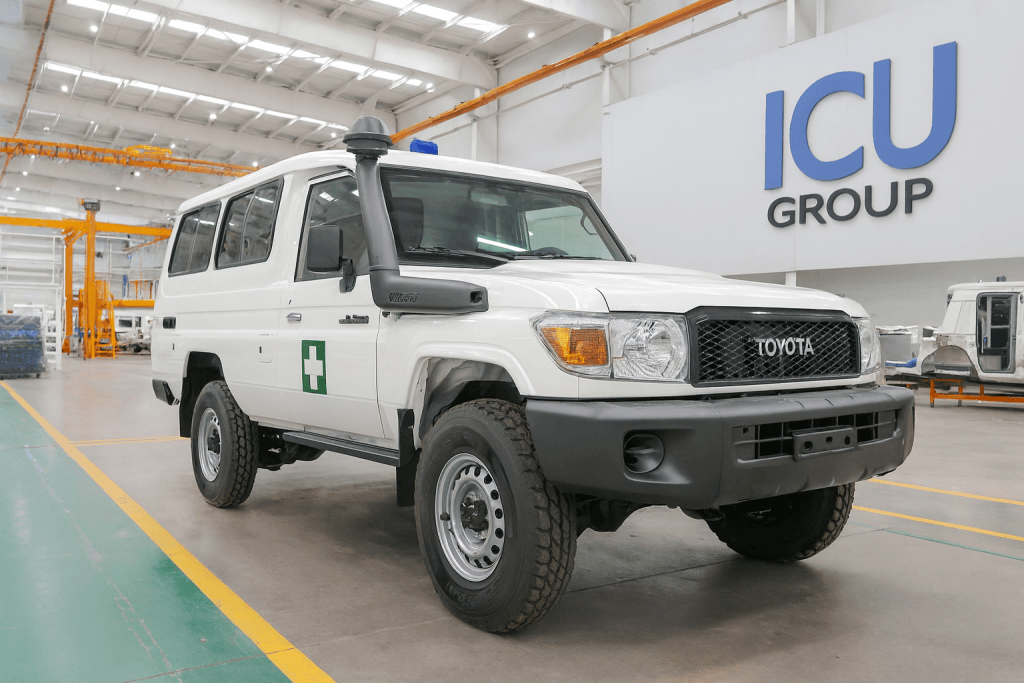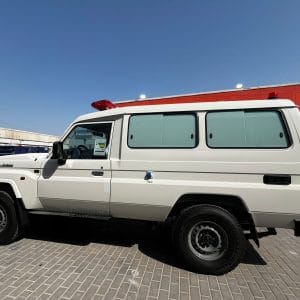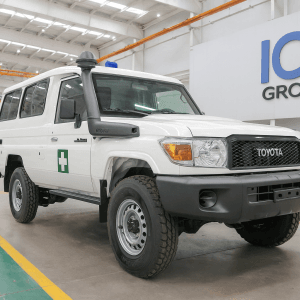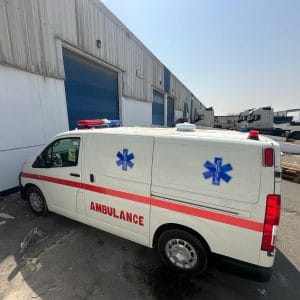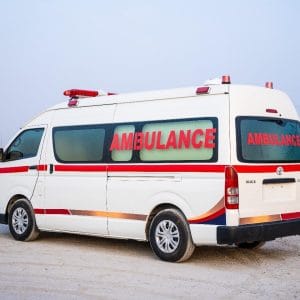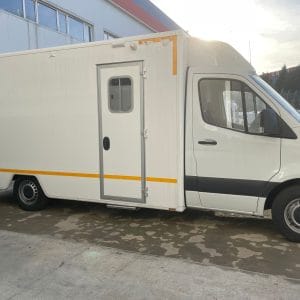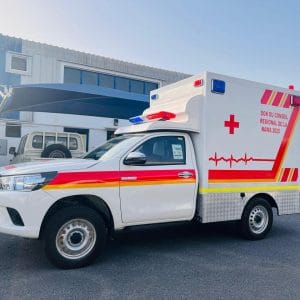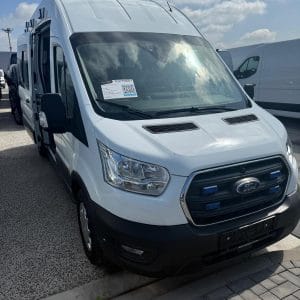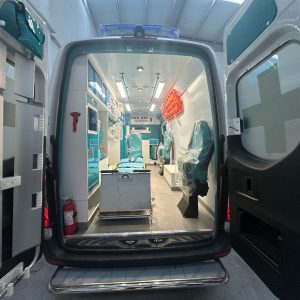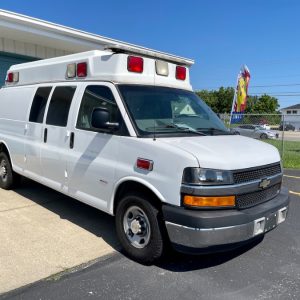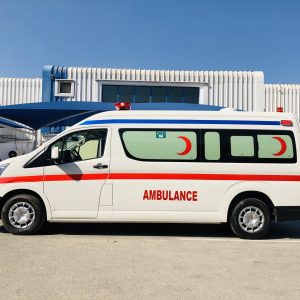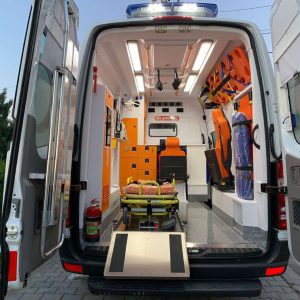Land Cruiser Ambulance 78-Series 2.8TD AUTO; In emergency medical services, time is of the essence, and the right equipment is the key to saving lives. Whether navigating rugged off-road terrain, reaching remote locations, or maneuvering through dense urban traffic, a reliable ambulance platform is the backbone of any successful operation. This is where the legendary Land Cruiser Ambulance 78-Series 2.8TD AUTO comes into its own. Priced at $52,300 USD, this specially converted vehicle is not merely a patient transport vehicle; it is a fully-equipped, mobile emergency room built on one of the world’s most dependable chassis.
This in-depth article will explore the technical prowess of the Land Cruiser 78-Series, the advanced medical equipment contained within its patient cabin, and why it represents a superior choice for critical care transport.
The Legendary Chassis: Engineered for Resilience – Land Cruiser Ambulance 78-Series 2.8TD AUTO
The Toyota Land Cruiser is synonymous with reliability in the most unforgiving environments on earth. The 78-Series, with its robust ladder frame and proven components, is the perfect foundation for an ambulance conversion.
- 2.8-Litre Turbo Diesel Engine (2.8TD): This powerful and efficient engine delivers high torque at low RPMs, providing the necessary pulling power for quick acceleration and navigating steep, uneven tracks without compromising fuel economy.
- Automatic Transmission (AUTO): The automatic transmission significantly reduces driver fatigue, especially in stressful emergency situations and congested city traffic. Smooth gear shifts are crucial for patient comfort and the stability of sensitive medical equipment during transport.
- Robust Chassis and Suspension: Built with a heavy-duty load capacity and a reinforced suspension system, this ambulance ensures a stable and smooth ride, protecting both the patient and the sophisticated onboard medical technology from excessive jolts and vibrations.
The Patient Cabin: A Sanctuary of Hygiene, Comfort, and Technology
The heart of this vehicle is its meticulously designed patient cabin, where every detail is optimized for clinical efficiency and patient care.
1. Driver and Patient Compartment Separation:
- MDF Panel with Sliding Windows: A hygienic MDF panel physically separates the driver’s cabin from the patient/paramedic area. This partition features two sliding windows, facilitating clear communication and easy passage of supplies while maintaining patient privacy when needed.
2. Climate Control and Lighting:
- Dedicated Patient Cabin AC: An independent air-conditioning unit for the patient compartment ensures an optimal temperature for the patient and a comfortable working environment for the medical team, regardless of the external climate.
- Sanitary Cabin Lighting: Specially designed interior lighting provides ample, non-intrusive illumination for paramedics to perform medical procedures effectively.
- Ambulance Rear Spotlight: A powerful rear spotlight is essential for safe patient loading and unloading during nighttime operations or in poorly lit areas.
3. Safety and Warning Systems:
- Red and Blue Multi-Flasher LED Roof Light Bar: A high-visibility, energy-efficient LED light bar mounted on the roof ensures the ambulance is seen from a great distance, alerting other drivers and pedestrians.
- Rear Flashing Beacons: Additional flashing beacons at the rear provide an extra layer of safety.
- 150W Electronic Siren and Public Address System: A high-decibel electronic siren with multiple modes is critical for clearing traffic. The system also includes a horn function and a public address (PA) system for direct communication.
- 2kg ABC Fire Extinguisher: A readily accessible fire extinguisher is standard equipment to handle any potential fire hazards.
4. Electrical Infrastructure and Power Management:
- Dual Battery System: The vehicle is equipped with a separate, minimum 90Ah, 12V auxiliary battery. This ensures that all medical devices and cabin systems can operate uninterrupted, even when the vehicle’s engine is off, without the risk of draining the starter battery.
- Multiple Socket Outlets: The patient cabin contains at least two 12V DC and two 220V AC cigar-lighter-type sockets. These are vital for powering and charging portable medical devices.
- External Power Connection: An IP-65 rated, 220V external “male” connector is installed on the driver’s side of the vehicle. It comes with two “female” connectors on a cable at least 20 meters long. This allows the ambulance to hook up to an external power source (e.g., at a hospital bay), enabling it to run equipment and charge its batteries without using the engine.
5. Storage and Other Critical Details:
- Side-Mounted Storage Cabinet: The cabin features a side-mounted storage cabinet with LED lighting, containing multiple compartments and drawers. This organized space is designed for secure storage of medicines, supplies, and small equipment, all with secure closures.
- Window Film for Privacy: For patient dignity and privacy, the rear and side windows of the patient compartment are ¾ masked with a high-quality “3M” sandblasted, translucent film.
- Caregiver Safety Belt: A safety belt is installed for the paramedic’s seat or bench within the patient cabin, ensuring crew safety while the vehicle is in motion.
- Customizable Markings: All markings and logos to be affixed to the ambulance bodywork are agreed upon with the customer prior to the order.
- Comprehensive Warranty: The vehicle and its conversion are backed by a warranty of not less than 2 years or 100,000 km.
Portable Medical Equipment: A Mobile Intensive Care Unit
This Land Cruiser Ambulance is transformed into a mobile ICU through its suite of advanced, on-board medical devices.
1. Electric Suction Unit:
This device is used for aspirating fluids from a patient’s airway. It can operate on both 220V AC and the ambulance’s 12V DC power. It features continuous vacuum adjustment up to 550 mmHg, a transport handle, and a suction capacity of at least 30 liters per minute. It includes sterilizable 1000ml collection bottles with overflow protection and a rechargeable battery offering 60+ minutes of operation. The ambulance wall mount includes an integrated DC charger.
2. Compact Transportable Patient Monitor:
This versatile monitor provides comprehensive vital sign monitoring for both adult and pediatric patients, including:
- SPO2 and Pulse Rate: Blood oxygen saturation and heart rate.
- NIBP (Non-Invasive Blood Pressure): Automated blood pressure monitoring.
- ECG: 12-lead electrocardiogram with automatic lead recognition, ST-segment analysis, and arrhythmia detection.
- Temperature: Core body temperature measurement.
- Capnography (EtCO2): Measures end-tidal carbon dioxide, a critical parameter for assessing ventilation.
The device features a color TFT LCD touchscreen (min. 5″), stores data trends for over 24 hours, and has configurable audiovisual alarms. It is powered by an internal battery providing 3+ hours of operation and can be connected to both 220V AC and 12V DC sources.
3. Manual Aneroid Sphygmomanometer:
A reliable, mechanical backup for blood pressure monitoring. This mercury-free device has a 0-300 mmHg range and includes four reusable, washable cuffs (three adult sizes and one pediatric).
4. Semi-Automatic External Defibrillator (AED) with Pacemaker:
A life-saving device for cardiac arrest situations. It is suitable for both adult and pediatric patients and includes an integrated external pacemaker. It features semi-automatic and manual defibrillation modes, CPR feedback with a metronome, and a clear 8″ TFT display for ECG monitoring. It is robust, with an IPX4 protection rating, and resistant to common disinfectants.
5. Self-Collapsing Wheeled Ambulance Stretcher:
The cornerstone of patient transport. This stretcher has a 250 kg capacity and is made from corrosion-resistant aluminum or stainless steel. It is高度 adjustable (25-80 cm), can achieve Trendelenburg position, and features four shock-absorbing casters, a hydraulic/pneumatic lifting system, and multiple safety straps and side rails. It is designed for easy one-handed maneuverability and smooth loading into the ambulance.
Additional Essential Medical and Safety Gear Land Cruiser Ambulance 78-Series 2.8TD AUTO
The ambulance is also stocked with a complete set of supporting equipment:
- Oxygen Cylinder: A medical-grade oxygen cylinder (min. 10L water capacity, 200 bar pressure) with a regulator and secure ambulance mounting.
- Oxygen Cannulas: Disposable, latex-free cannulas with 2.1-meter tubes.
- Sharps Container: A puncture-resistant, leak-proof container for the safe disposal of used needles and other sharps.
- Vomit Bags: Leak-proof, disposable bags with a secure seal.
- Pupillary Penlight: A compact, durable LED light for neurological assessments.
- Seat Belt Cutter: A robust, safety-bladed tool for rapid extrication.
- High-Intensity LED Searchlight: A powerful, portable light (min. 5,000 lumens) for scene illumination.
- Warning Triangle: A high-visibility, foldable triangle for roadside safety.
- Paramedic Vest: A high-visibility, multi-pocket vest (EN ISO 20471 Class 2 compliant) for crew safety and efficiency.
- Baby Carrycot: A safety-approved carrycot that securely fastens to the stretcher for infant transport.
Conclusion: The Pinnacle of Reliability and Capability
The Land Cruiser Ambulance 78-Series 2.8TD AUTO is more than just a vehicle; it is a comprehensive emergency response solution. It masterfully combines the unmatched off-road durability and reliability of the Toyota Land Cruiser with a thoughtfully designed, fully-equipped medical interior. For $52,300 USD, organizations receive a rugged, go-anywhere lifeline capable of providing critical care in the most challenging environments, from dense urban centers to the most remote locations. It represents a smart investment in community safety, operational readiness, and, most importantly, in saving lives.


